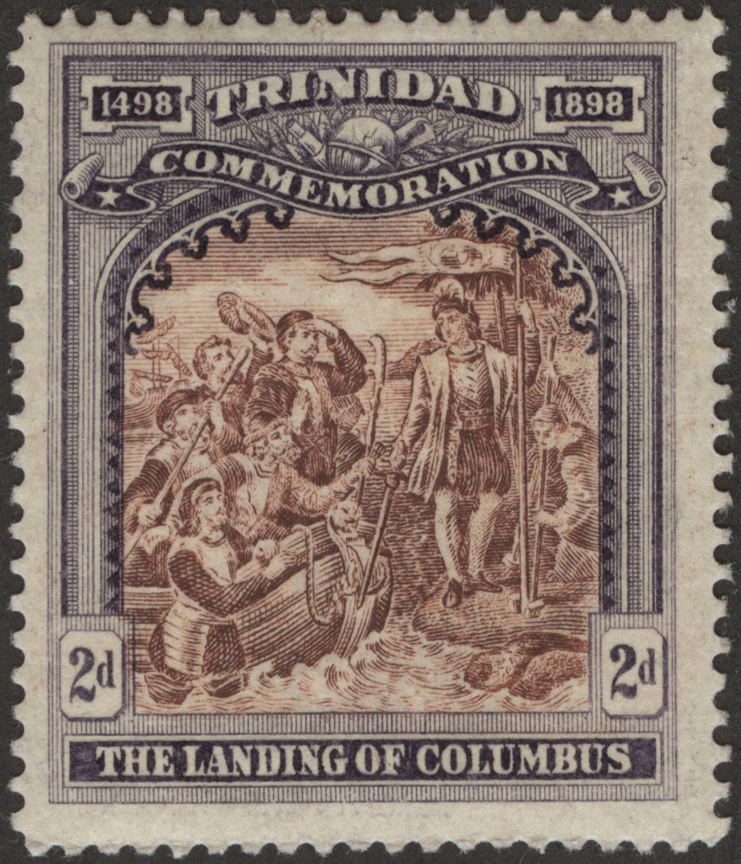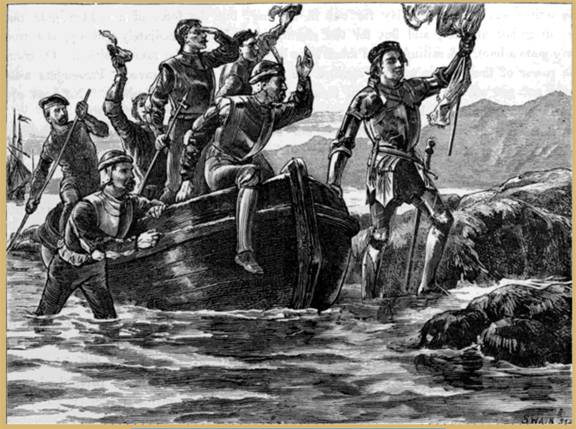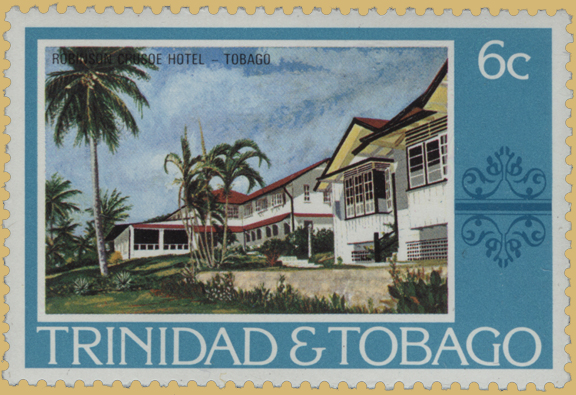Trinidad
400th Anniversary of the Discovery
of Trinidad by Columbus

Trinidadian Stamp Commemorating the 400th Anniversary
of Columbus' "Discovery" of Trinidad
In 1898 Trinidad issued its first commemorative stamp. It marked the 400th anniversary of the "discovery" of the island by Christopher Columbus. In his 1877 book The sea : its stirring story of adventure, peril & heroism, Frederick Whymper provides the following account of Columbus' discovery of Trinidad:
On the 31st July, 149[8], Columbus, on his third voyage, sighted the three hills which make the south-eastern end of Trinidad. He had determined to name the first land he should sight after the Holy Trinity, and so he did. The triple peaks probably reminded him.
Washington Irving tells us, in his “Life of Columbus,” that he was astonished at the verdure and fertility of the country, having expected that it would be parched, dry, and sterile as he approached the equator; whereas, he beheld beautiful groves of palm-trees, and luxuriant forests sweeping down to the sea-side, with gurgling brooks and clear, deep streams beneath the shade. The softness and purity of the climate, and the beauty of the country, seemed, after his long sea voyage, to rival the beautiful province of Valencia itself. Columbus found the people a race of Indians fairer than any he had seen before, “of good stature, and of very graceful bearing.” They carried square bucklers, and had bows and arrows, with which they made feeble attempts to drive off the Spaniards who landed at Punta Arenal, near Icacque, and who, finding no streams, sank holes in the sand, and so filled their casks with fresh water—as is done by sailors now-a-days in many parts of the world. “And there,” says Kingsley, “that source of endless misery to these harmless creatures, a certain Cacique—so goes the tale—took off Columbus’s cap of crimson velvet, and replaced it with a circle of gold which he wore.”
Alas for them! that fatal present of gold brought down on them enemies far more ruthless than the Caribs of the northern islands, who had a habit of coming down in their canoes and carrying off the gentle Arrawaks, to eat them at their leisure—after the fashion which Defoe, always accurate, has immortalised in “Robinson Crusoe.” Crusoe’s island has been thought by many to be meant for Tobago; Man Friday having been stolen in Trinidad.
Swain's illustration published in the same book shows a slight similarity to the design used on the stamp. Whymper's reference to Tobago as Robinson Crusoe's island is echoed in a 1978 stamp from Trinidad and Tobago depicting the Robinson Crusoe Hotel on Tobago.

"The Landing of Columbus at Trinidad" from Frederick Whymper's
The sea : its stirring story of adventure, peril & heroism.

The Robinson Crusoe Hotel on Tobago is featured on one of
five stamps depicting local hotels issued on January 17, 1978.
Bibliography
"Trinidad." Standard Postage Stamp Catalogue. 2008.
"Trinidad and Tobago." Standard Postage Stamp Catalogue. 2008.
Whymper, Frederick. The sea : its stirring story of adventure, peril & heroism.
Fairbanks, Alaska: Project Gutenberg Literary Archive Foundation, 2012.
Web. 11 Mar. 2016. http://www.gutenberg.org/files/39341/39341-h/39341-h.html#figlandofco.
Direct comments, questions and corrections to:
stampquestions@hotmail.com
© Grose Educational Media, 2016
|